The modern consumer has spoken, and their message is clear: they want control, convenience, and speed. Across every industry, from retail and hospitality to healthcare and government services, customers are increasingly gravitating toward self-service options that put them in the driver's seat of their experience.
This shift isn't just a trend—it's a fundamental transformation in how people prefer to interact with businesses. Understanding and adapting to this change has become essential for organizations looking to meet customer expectations and remain competitive in today's digital landscape.
The Forces Driving Self-Service Adoption
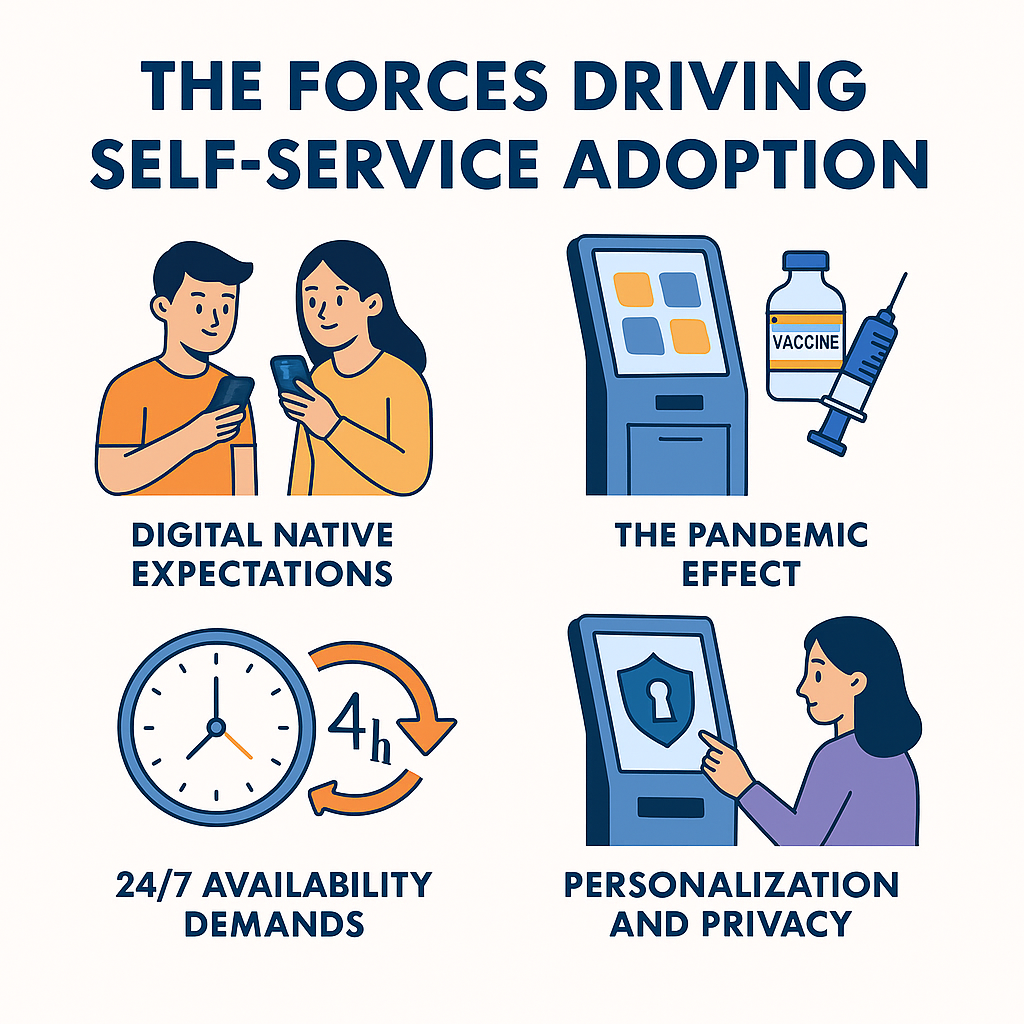 Several converging factors have accelerated the demand for self-service solutions across industries.
Several converging factors have accelerated the demand for self-service solutions across industries.
Digital Native Expectations: Today's consumers, particularly millennials and Gen Z, have grown up with smartphones, apps, and instant access to information. They expect the same level of immediacy and control in their offline interactions that they experience online. For these digital natives, waiting in line for a human representative often feels unnecessary and inefficient.
The Pandemic Effect: COVID-19 dramatically accelerated self-service adoption by making contactless interactions not just convenient, but necessary. What began as a health precaution quickly revealed the efficiency benefits of self-service options. Many customers discovered they preferred the speed and autonomy these solutions provided, creating lasting behavioral changes that persist well beyond pandemic restrictions.
24/7 Availability Demands: Modern life doesn't operate within traditional business hours. Customers want to access services when it's convenient for them—whether that's 6 AM before work or 10 PM after putting the kids to bed. Self-service kiosks and automated systems provide round-the-clock availability that human-staffed operations simply can't match cost-effectively.
Personalization and Privacy: Self-service options often allow customers to take their time, review options thoroughly, and make decisions without feeling rushed or judged. This is particularly valuable in sensitive situations, such as healthcare check-ins or financial transactions, where privacy and discretion are important.
Self-Service Across Industries
The adoption of self-service technologies spans virtually every sector, each finding unique ways to enhance customer experience while improving operational efficiency.
Retail and Quick Service: Grocery stores have embraced self-checkout stations, while fast-food chains use ordering kiosks to reduce wait times and increase order accuracy. These solutions allow customers to browse menus at their own pace, customize orders precisely, and avoid miscommunication that can occur with verbal orders.
Healthcare: Patient check-in kiosks have revolutionized waiting room experiences, allowing patients to verify information, update insurance details, and complete forms digitally. This reduces administrative burden on staff while giving patients more control over their visit preparation.
Hospitality and Travel: Hotels offer self-service check-in kiosks that eliminate front desk queues, while airports deploy numerous self-service options for check-in, baggage tagging, and security document verification. These solutions are particularly valuable in high-volume environments where speed and efficiency are paramount.
Government Services: Municipal offices and DMV locations increasingly rely on self-service kiosks for routine transactions like permit renewals, fee payments, and information requests. This allows government workers to focus on complex cases that require human intervention while providing citizens with faster service for standard requests.
Entertainment and Events: Movie theaters, theme parks, and sports venues use self-service kiosks for ticket purchases, concession orders, and merchandise sales. These systems reduce staffing needs during peak times while eliminating bottlenecks that can negatively impact the customer experience.
The Business Benefits of Self-Service
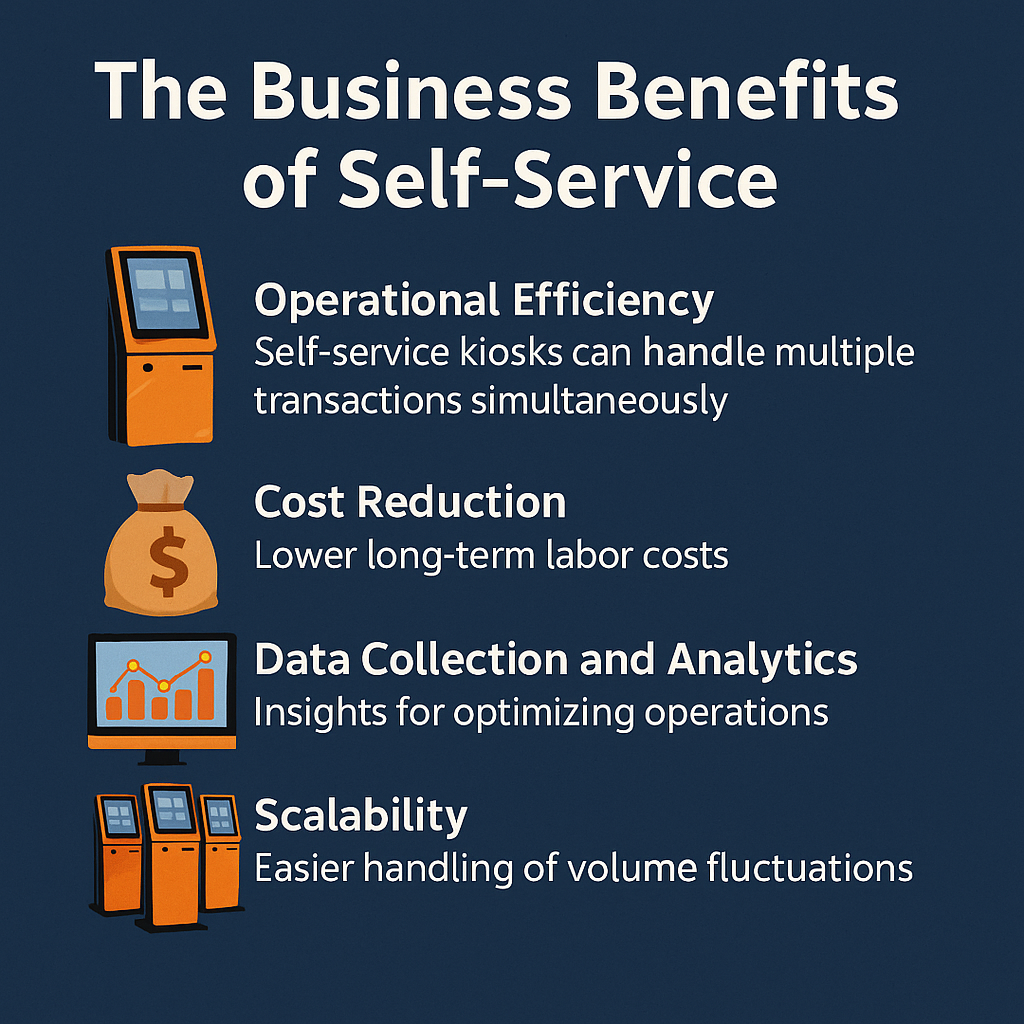 Organizations implementing self-service solutions report significant advantages beyond improved customer satisfaction.
Organizations implementing self-service solutions report significant advantages beyond improved customer satisfaction.
Operational Efficiency: Self-service kiosks can handle multiple transactions simultaneously without breaks, sick days, or varying service speeds. This consistency allows businesses to maintain service levels even during staff shortages or peak demand periods.
Cost Reduction: While the initial investment in self-service technology requires capital, the long-term savings in labor costs can be substantial. Staff can be redeployed to higher-value activities that require human expertise and creativity.
Data Collection and Analytics: Digital self-service interactions generate valuable data about customer preferences, peak usage times, and common service requests. This information enables businesses to optimize operations and make data-driven decisions about service offerings.
Scalability: Self-service solutions can handle volume fluctuations more easily than human-staffed operations. During busy periods, customers can use multiple kiosks simultaneously, while slower periods don't result in idle labor costs.
Overcoming Implementation Challenges
Despite the clear benefits, organizations must navigate several challenges when implementing self-service solutions.
User Experience Design: The interface must be intuitive enough for users of all ages and technical abilities. Poor design can create frustration and drive customers away from self-service options entirely. Successful implementations prioritize simplicity, clear navigation, and accessibility features.
Technology Integration: Self-service kiosks must integrate seamlessly with existing systems, from payment processors to inventory management and customer databases. This requires careful planning and often custom development to ensure smooth operation.
Maintenance and Support: Self-service systems require ongoing maintenance, software updates, and technical support. Organizations must plan for these operational requirements and have protocols in place for handling system outages or malfunctions.
Staff Training and Change Management: Employees need training on how to assist customers with self-service options and when to intervene. Managing the transition requires clear communication about how self-service enhances rather than replaces human jobs.
The Future of Self-Service
As technology continues to evolve, self-service solutions are becoming more sophisticated and capable of handling increasingly complex interactions.
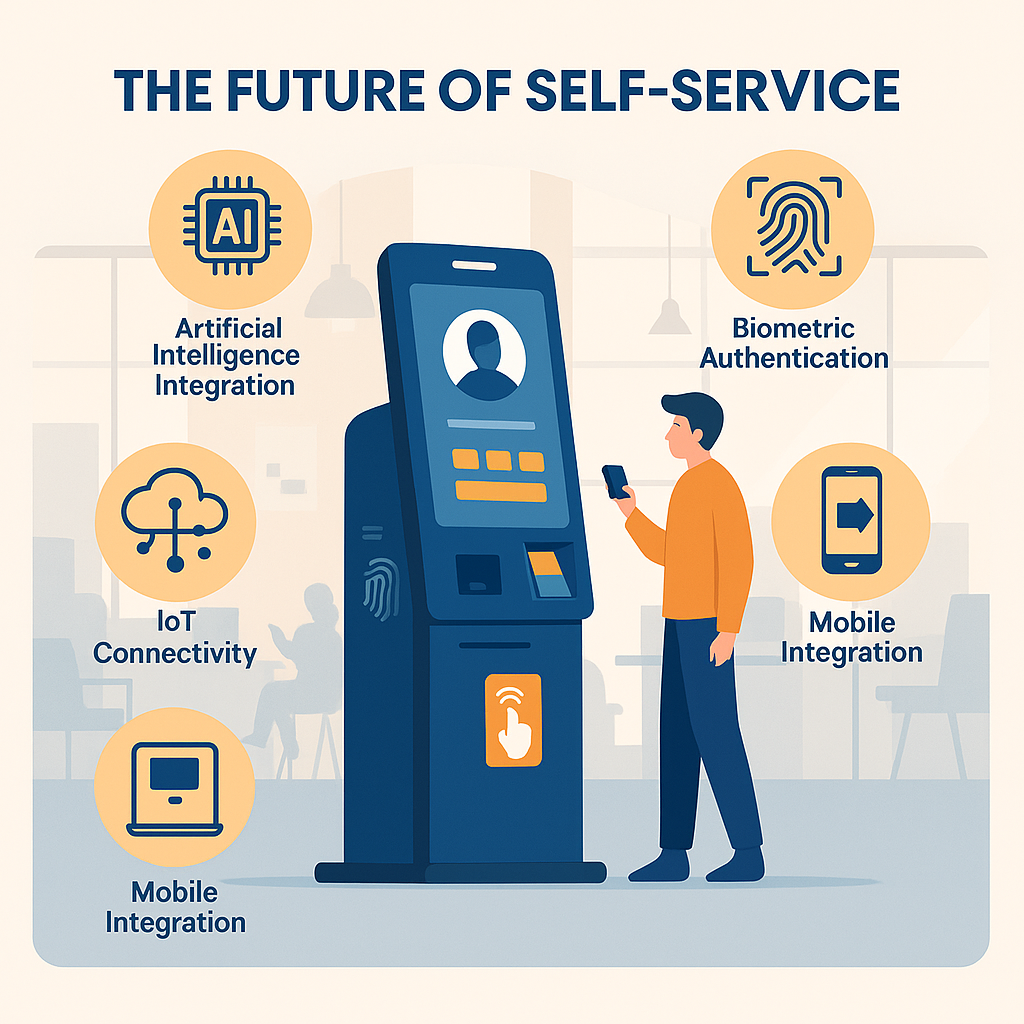 Artificial Intelligence Integration: AI-powered kiosks can provide more personalized recommendations, understand natural language queries, and learn from customer interactions to improve over time. This makes self-service options more helpful and engaging.
Artificial Intelligence Integration: AI-powered kiosks can provide more personalized recommendations, understand natural language queries, and learn from customer interactions to improve over time. This makes self-service options more helpful and engaging.
Biometric Authentication: Fingerprint scanners, facial recognition, and other biometric technologies are making self-service more secure while eliminating the need for cards, codes, or passwords.
IoT Connectivity: Internet of Things integration allows self-service kiosks to communicate with other systems and devices, enabling more comprehensive service offerings and better inventory management.
Mobile Integration: Customers increasingly expect to start transactions on their mobile devices and complete them at kiosks, or vice versa. This omnichannel approach provides maximum flexibility and convenience.
Meeting Customer Expectations
The rise of self-service reflects a broader shift in customer expectations around control, convenience, and efficiency. Businesses that recognize and adapt to this trend position themselves to deliver the experiences modern consumers demand.
However, successful self-service implementation isn't about replacing human interaction entirely—it's about providing customers with choices and using technology to enhance rather than diminish the overall service experience. The most effective approaches combine efficient self-service options with available human support when needed.
Organizations that embrace self-service solutions thoughtfully, with careful attention to user experience and integration with existing operations, will find themselves better equipped to meet evolving customer expectations while building more efficient and resilient business operations.
In our increasingly digital world, self-service isn't just an option—it's becoming an expectation. The businesses that thrive will be those that recognize this shift and implement solutions that truly serve their customers' desire for autonomy, speed, and convenience.
The definition of what makes a valuable customer interaction is expanding. While speed and efficiency remain important, a purely transactional encounter often misses the opportunity to build loyalty or leave a lasting positive impression. Businesses are increasingly seeking ways to make every touchpoint more meaningful, and the once-humble digital kiosk is emerging as a surprisingly powerful ally in this endeavor. No longer confined to simple order-taking or information retrieval, modern interactive kiosks are evolving into dynamic platforms designed to create richer, more engaging customer experiences.
At REDYREF, we've seen firsthand how this evolution can reshape customer perception and interaction. We believe the true strength of today’s kiosk technology lies in its capacity to move beyond the transaction, fostering genuine engagement and building stronger connections.
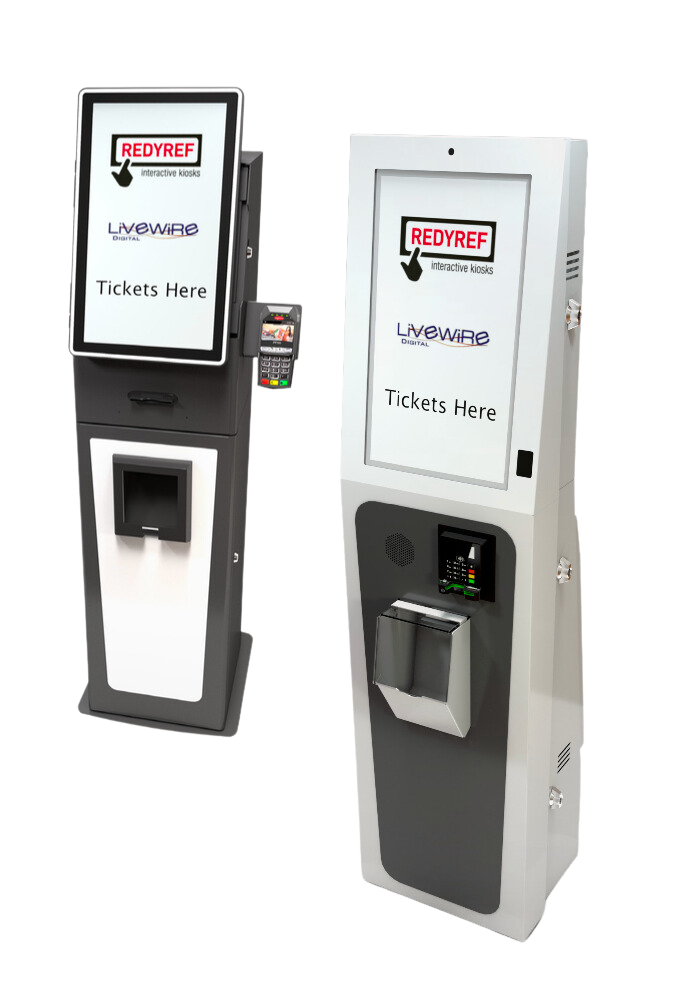
Crafting Experiences, Not Just Processing Orders
Modern interactive kiosks are versatile platforms capable of transforming how customers connect with a brand, access information, and navigate services. Here’s how they are making a difference:
- Personalized Journeys: Interactive kiosks can offer tailored experiences based on user input or loyalty program data. Imagine a retail kiosk suggesting outfits based on a customer's style quiz, or a hospitality kiosk remembering a guest's preferences for a quicker, more personalized check-in. This level of personalization makes customers feel understood and valued.
- Immersive Information and Discovery: Instead of static displays, kiosks can provide dynamic, rich content. Customers can explore product features in 3D, watch how-to videos, compare options side-by-side, or take virtual tours. In a complex environment like a large venue or campus, interactive wayfinding kiosks don’t just show a map; they guide users with intuitive, step-by-step directions and highlight points of interest, turning potential frustration into a seamless discovery process.
- Empowering Customers with Control and Convenience: Well-designed kiosks empower users by giving them control over their experience. Whether it's customizing an order at a restaurant, managing appointments, accessing account information, or self-service ticketing, customers appreciate the autonomy and efficiency. This isn't just about speed; it's about providing a convenient, user-friendly interface that makes their lives easier.
- Building Brand Connection and Storytelling: Kiosks offer a unique channel to reinforce brand identity and share your story. Through customized interfaces, engaging visuals, and interactive brand-related content, businesses can create a more profound connection with their audience. A museum kiosk can offer deeper dives into exhibits, or a corporate lobby kiosk can showcase company values and achievements, making the brand more tangible and relatable.
- Gathering Valuable Insights (Ethically): While providing engaging experiences, interactive kiosks can also gather valuable (and anonymous, if preferred) data on customer preferences, common queries, and interaction patterns. These insights can be instrumental in further refining services, optimizing offerings, and continuously improving the overall customer journey.
- Reducing Friction and Enhancing Staff Effectiveness: By handling routine inquiries or transactions, interactive kiosks can free up staff to focus on more complex, high-value customer interactions. This doesn’t replace the human element but enhances it, allowing employees to provide more specialized support where it’s needed most, leading to greater overall customer satisfaction.
The Future of Engagement is Interactive
The shift towards experiential customer engagement is undeniable. Interactive kiosks are at the forefront of this transformation, offering businesses innovative ways to captivate audiences, provide exceptional service, and build stronger brand affinity. It’s no longer about just getting through a transaction; it's about making every interaction an opportunity to impress, inform, and engage.
At REDYREF, we’re passionate about designing and manufacturing interactive kiosk solutions that help businesses unlock these experiential possibilities. We believe that with the right approach, a kiosk can be one of your most powerful tools for building lasting customer relationships.
The world of digital building directories is brimming with possibilities—static screens, rotating slides, interactive touchscreens, wall mounts, floor-standing kiosks, and even advanced features like 3D mapping or mobile integration. For businesses ready to move beyond outdated paper or strip directories, the sheer variety can feel overwhelming. Where do you even begin?
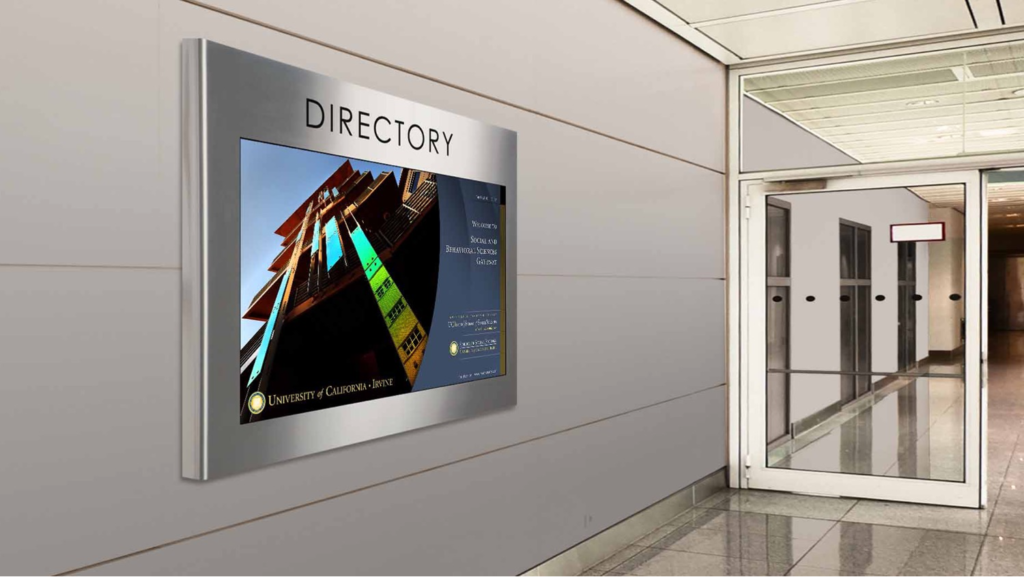
At REDYREF, we’ve helped countless clients navigate this decision, and we’ve learned that it all boils down to finding the right fit for your unique needs. To simplify the process, let’s break it down with a focus on two main options—touch vs. non-touch digital directories—and explore how the “three Ss” (Situation, Setting, and Surroundings) can guide your choice. Whether you’re outfitting an airport, a medical campus, or a high-rise apartment lobby, here’s what you need to know to make an informed decision.
Touch vs. Non-Touch: What’s the Difference?
First, the basics. Non-touch digital directories come in two flavors:
- Static: A fixed display showing consistent info, like office numbers or tenant locations.
- Rotating: A screen cycling through pre-set “slides” of information, with sections or the entire display updating automatically.
Touchscreen directories, on the other hand, bring interactivity to the table. These range from:
- Limited touch: Simple one- or two-button controls to page through screens or return to “home.”
- Fully interactive: Tablet-like capabilities with advanced software, enabling personalized wayfinding, searches, or custom features.
While touchscreens might seem like the obvious winner with their versatility, the best choice hinges on your specific environment. That’s where the “three Ss” come in.
The Three Ss: Your Decision-Making Framework
-
Situation: What’s the Purpose?
The “why” behind your directory shapes everything. If you’re an airport displaying flight info for hundreds of travelers at once, a large, non-touch rotating screen is ideal—readable from a distance, cost-effective, and no interactivity needed. Contrast that with a sprawling medical campus, where patients and visitors need tailored directions across multiple buildings. Here, smaller, full-touchscreen kiosks offering detailed interactive wayfinding outshine static displays by delivering a frustration-free, personalized experience.
Somewhere in between? Consider limited-touch options—like the headrest screens on airplanes. Passengers can page through entertainment options without needing full interactivity, balancing function and cost.
-
Setting: Where’s It Going?
The environment itself matters. A 40-floor apartment building in NYC might only need a compact touchscreen (under 26”) for tenants to scroll through names—basic yet effective. Add premium features like local maps or building announcements, and it’s still manageable. But a mixed-use development with shops, restaurants, and residences demands more: a fully interactive kiosk that lets users buy movie tickets, make reservations, or plan multi-stop routes.
For a hospital campus, ADA compliance and ease of use are non-negotiable. Patients—often stressed or short on time—benefit from touchscreen wayfinding that’s intuitive and calming, far beyond what a static floor-by-floor directory can offer.
-
Surroundings: Where’s It Placed?
Placement within the space seals the deal. A small office with 15 tenants can thrive with a wall-mounted, static non-touch directory—all the info fits on one screen, no bells or whistles required. Scale up to a larger facility with dozens of tenants or added functionality (like a digital receptionist), and a freestanding touchscreen kiosk becomes the smarter pick for accessibility and engagement.
In a staffed lobby, a desk-mount interactive directory can lighten the load on receptionists during peak hours, letting visitors self-serve while still having help nearby. For a high-rise apartment with 100+ residents, a floor-mounted unit with limited touch (scrolling and buzzing in guests) strikes the perfect balance.
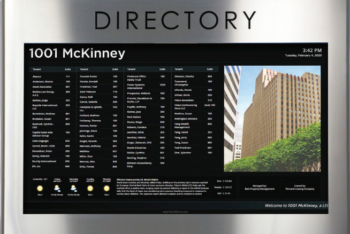
Why It Matters—and Why REDYREF Excels
Choosing between touch and non-touch isn’t just about features; it’s about maximizing value for your business and your users. A poorly matched directory can frustrate customers, waste resources, or miss opportunities to impress. That’s why we at REDYREF emphasize careful planning around the “three Ss”—it’s the key to unlocking a solution that works today and scales tomorrow.
As an end-to-end manufacturer of self-service kiosks, we’ve deployed digital directories for every imaginable scenario—from sleek office lobbies to bustling airports. Our clients, including industry leaders like Hilton and AT&T, trust us to deliver best-in-class experiences backed by ISO 9001:2015-certified quality. Whether you need a simple static display or a fully immersive wayfinding hub, we’ve got the expertise to make it happen.
Ready to Find Your Perfect Fit?
Investing in a digital directory doesn’t have to be daunting. Start with the “three Ss,” and let REDYREF guide you the rest of the way. Submit a request for proposal online or call us at (800) 628-3603 today to explore how our interactive kiosk solutions can elevate your space—and your customer experience. The future of wayfinding is here—let’s build it together.
Endless Aisle. Omnichannel. Virtual Merchandising. Unified Commerce. These terms might sound like retail jargon, but they represent a fundamental shift in how we shop and how businesses operate. At REDYREF, we've been at the forefront of kiosk technology for over 100 years (yes, you read that right!), and we're seeing firsthand how these concepts are transforming the retail landscape. We've helped countless businesses navigate these changes, and we can help you too.

What's Driving the Shift to Retail Automation?
Let's face it, the retail industry is evolving faster than ever. Consumers are more connected and informed than ever before. They're no longer satisfied with a standard in-store experience. They expect seamless, personalized experiences that blend the physical and digital worlds. This is where retail automation, particularly through interactive kiosks, comes into play. Think of it this way: your customers are already living in a digitally-connected world – shouldn't your retail experience match that?
Key Concepts in Retail Automation: A Breakdown
Let's break down some of the key concepts shaping the future of retail (and we'll try to keep from getting too bogged down in technicalities):
- Endless Aisle: This kiosk strategy allows retailers to extend their in-store inventory virtually. Imagine a customer being able to browse your entire catalog, even if you don't have the physical space to display it all. Using in-store self-service kiosks, customers can browse and purchase products that aren't physically available on the shelves, often with options for home delivery or in-store pickup.
- Omnichannel: This approach focuses on creating a consistent brand experience across all channels – online, mobile, and in-store. It is about making sure your brand's message and look are the same everywhere a customer interacts with you. While important, it primarily focuses on marketing and merchandising, and not on fully integrating the tech you use.
- Virtual Merchandising: This involves using technology to enhance the in-store experience. We're talking about interactive elements that make shopping more engaging. Examples include virtual mannequins (interactive holograms), touch-on-glass displays (turning windows into touchscreens), and digital kiosks that connect customers with remote sales associates.
- Unified Commerce: This is the most advanced and integrated approach. It's the holy grail of modern retail. It goes beyond omnichannel by connecting not just the customer-facing channels but also the underlying infrastructure – POS systems, inventory management, customer data, and more. This creates a truly seamless experience where customers can shop, pay, and interact with the brand in any way they choose. It's about making every part of your business work together, seamlessly.
The Power of Unified Commerce: A Personalized Shopping Journey That Drives Sales
Imagine a customer browsing essential oils in a store. With a unified commerce system, powered by our technology, they could:
- Scan QR codes with their phone to learn about specific oils, their benefits, and related products, accessing a wealth of information beyond what a small label can provide.
- Add items to their digital cart directly from their phone, making shopping more convenient.
- Walk out of the store with their purchases, having paid through their mobile device, skipping the checkout line entirely.
- Alternatively, browse in-store, use a kiosk to order out-of-stock items for home delivery, and pay for everything at once, blending the physical and digital shopping experiences.
- Connect with a certified expert via video chat on a kiosk for personalized advice, getting the same level of service they'd expect from a dedicated in-store expert.
This level of personalization and convenience is what sets unified commerce apart, and it's what today's customers are starting to expect. It is not just about convenience, it is about creating a better experience that builds loyalty and boosts sales.
Automated Retail Kiosks: Beyond Vending Machines, Into True Customer Engagement
Automated retail kiosks are experiencing explosive growth, and for good reason. These aren't your typical vending machines. They're sophisticated, interactive systems capable of dispensing high-value products and providing personalized experiences. We're talking about kiosks that can sell anything from luxury cosmetics to electronics, and even cars!
Why are Major Brands Embracing Automated Retail? Here's the Inside Scoop
- Novelty and Attention: A car "vending machine" is a surefire way to generate buzz and attract attention. It's a talking point that gets people interested in your brand.
- Cost Optimization: In high-rent locations like airports, self-service retail kiosks offer a cost-effective way to establish a presence without the overhead of a full store. You can reach more customers in more places, without breaking the bank.
- Targeted Merchandising: Kiosks can be stocked with a curated selection of products tailored to the specific location and customer demographic. This means you can offer the right products to the right people at the right time -- even fresh food! -- maximizing your sales potential.
- 24/7 Availability: Kiosks don't need breaks! They can operate around the clock, extending your sales hours and catering to customers' busy schedules.
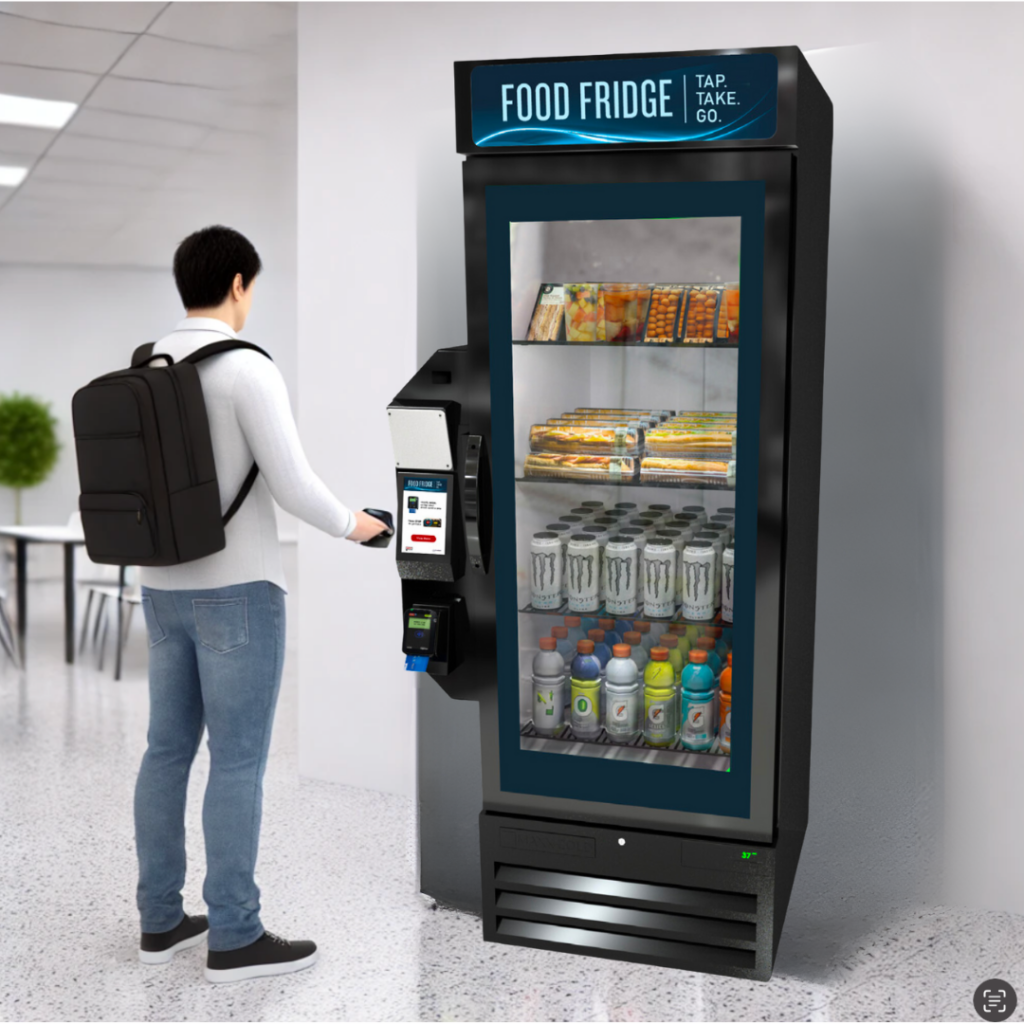
The Benefits of Retail Automation: Real Results You Can See
- Increased Sales: Endless aisle, virtual merchandising, and unified commerce strategies can lead to higher sales by offering more choices and a more convenient shopping experience. It's simple: make it easier for customers to buy, and they'll buy more.
- Enhanced Customer Experience: Personalized interactions, seamless transactions, and on-demand assistance contribute to greater customer satisfaction. Happy customers become repeat customers, and that's good for business.
- Operational Efficiency: Automated retail kiosks can reduce labor costs and optimize inventory management. You can do more with less, freeing up your staff to focus on other important tasks.
- Valuable Data Insights: Interactive kiosks collect data on customer behavior, preferences, and purchasing patterns, providing valuable insights for marketing and merchandising. This data helps you understand your customers better, so you can make smarter decisions about your business.
REDYREF: Your Partner in Retail Automation
At REDYREF, we take pride in helping businesses leverage the power of interactive kiosks and digital technology to transform their retail operations. We offer a wide range of customizable kiosk solutions, suitable for applications from endless aisle and virtual merchandising to fully integrated unified commerce platforms. Our expertise spans design, engineering, manufacturing, and deployment, making us a one-stop shop for all your retail automation needs. We don't just sell kiosks; we build long-term partnerships. We take the time to understand your specific needs and goals, and we work closely with you to develop a solution that's tailored to your business. Our experience and track record of success with leading brands prove that we are a trusted authority in this field.
The Future of Retail is Here, and We're Here to Help Your Company Thrive
The lines between physical and digital retail are blurring. Consumers expect seamless, personalized experiences, and businesses that embrace retail automation will be best positioned to thrive in this evolving landscape. Don't get left behind!
Ready to explore how retail automation can benefit your business and take it to the next level? Give us a call at (800) 628-3603 ext 525 or submit a request for a proposal online. Our team of experienced professionals is here to guide you every step of the way, from initial concept to successful implementation. Let's shape the future of retail together.
While traditional printed, handwritten, or analog building directories still have a place in some spaces, the shift to digital directories and wayfinding solutions has gained significant traction over the past decade. With advancements in technology making these solutions more affordable, even small businesses are adopting digital directories to enhance the visitor experience and streamline operations.
If you’re considering making the switch, it’s natural to feel overwhelmed. A successful digital directory rollout requires thoughtful planning, from design and engineering to software development and deployment. But with the right partner, you can create a solution that meets the needs of both your business and your end users while avoiding common pitfalls.
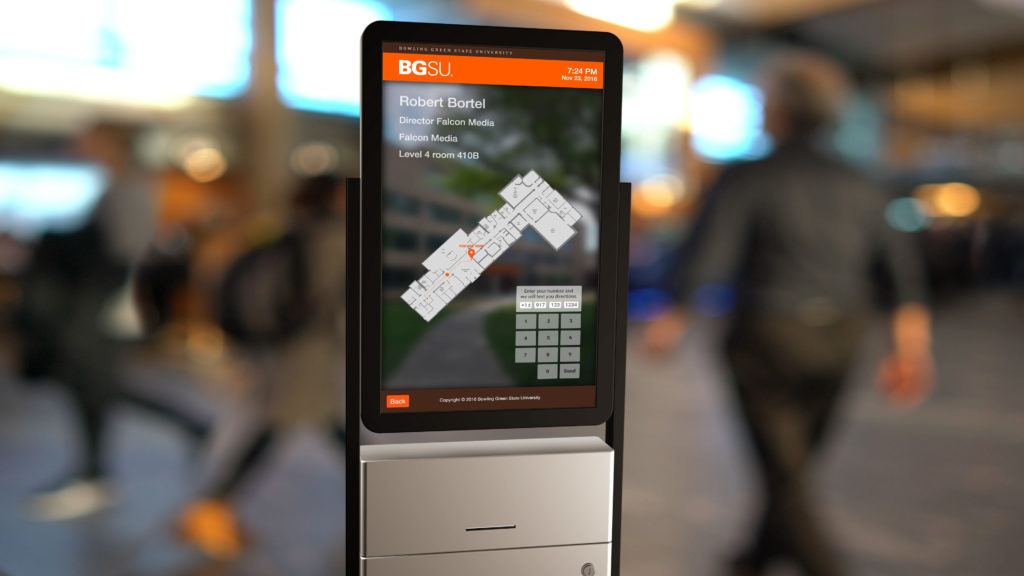
Why Go Digital? The Key Benefits
1. Effortless Updates:
One of the biggest frustrations with traditional directories is the time and effort required to update them. Digital and interactive directories allow for real-time updates, ensuring information is always accurate and relevant.
2. Improved Accessibility:
Digital directories can integrate features like multilingual support, audio guidance, or enhanced visual clarity, making them more inclusive for all users, including those with disabilities.
3. Enhanced User Experience:
With interactive touchscreens and intuitive interfaces, digital directories provide an effortless way for visitors to find what they need quickly, whether it’s a specific office, department, or amenity.
4. Space for More Information:
Digital solutions can display more information than a static directory. From real-time event schedules to detailed interactive wayfinding maps, digital directories offer unmatched flexibility.
5. Branding Opportunities:
A sleek, modern digital directory reinforces your company’s brand image and can even display promotional content or advertising, creating additional revenue streams.
Choosing the Right Partner for Your Digital Directory
Selecting a partner to bring your digital directory to life is one of the most important decisions you’ll make in this process. Look for a provider with end-to-end capabilities, including design, engineering, fabrication, and directory and wayfinding software development. This vertical integration eliminates the need to juggle multiple vendors and minimizes the risk of miscommunication, saving both time and money.
A fully integrated partner, like REDYREF, simplifies project management by serving as a single point of contact. From initial concept to final deployment, every step is handled in-house, ensuring efficiency and accountability.
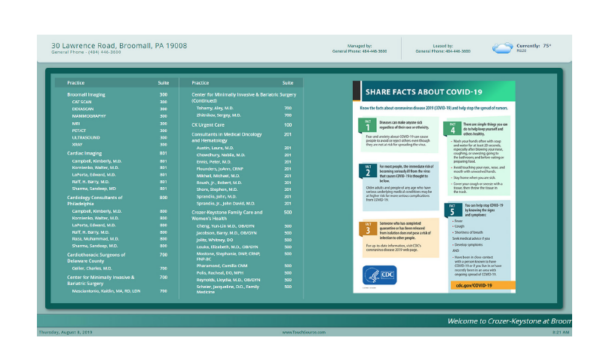
A Collaborative Process for a Tailored Solution
Before the design process even begins, your kiosk partner should work closely with you to understand the unique needs of your business and your users. Key questions might include:
•What are the main challenges with your current directory system?
•Are frequent updates causing delays or logistical issues?
•What specific information is most valuable to end users?
•How do users interact with the directory now, and what features would improve their experience?
This collaborative approach ensures that the final design is not only functional but also highly intuitive for users. The result? A solution that enhances the user experience while addressing your business challenges.
From Concept to Completion: The REDYREF Advantage
With REDYREF’s vertically integrated kiosk manufacturing process, your digital directory goes through every stage of development under one roof. Here’s what you can expect:
•Custom Design: A team of industrial designers and engineers works to create a solution tailored to your needs.
•Fabrication: Components are produced using state-of-the-art techniques, ensuring durability and precision.
•Finishing Touches: From powder coating to custom branding wraps, every detail is fine-tuned.
•Hardware Integration: Cutting-edge components like touchscreens, NFC payment systems, and printers can be seamlessly incorporated.
•Custom Software Development: REDYREF’s in-house team ensures your directory operates smoothly with features that align with your specific requirements.
•On-Site Installation: Your digital directory is delivered and installed, ready to enhance your space from day one.
Elevate Your Space with REDYREF Digital Directories
Switching to a digital directory doesn’t have to be a daunting process. By partnering with a team that can manage every aspect of the project, you can enjoy a streamlined experience that ensures a successful deployment.
Whether you’re a small business looking for a single directory or a large organization in need of a multi-location rollout, REDYREF has the expertise and resources to make it happen. Ready to bring your space into the future?
Contact us today to learn how REDYREF can transform your directory system into a modern, efficient, and user-friendly solution.
Let's talk about a challenge many businesses are facing: rising labor costs, particularly with mandated minimum wage increases in many states. It's a reality that's impacting bottom lines, especially in industries like retail and food service. But there's a solution gaining traction that can help mitigate these costs while also improving efficiency and customer satisfaction: automation through self-service kiosks.
Here at REDYREF, we've been at the forefront of digital kiosk technology for years. We've seen firsthand how automation can transform businesses, and we're here to tell you that it's not some futuristic concept – it's happening now, and it's more accessible than you might think.

Why is Automation Suddenly a Hot Topic?
Several factors are converging to make automation, particularly self-service kiosks, a critical consideration for businesses:
- Minimum Wage Hikes: The push for a $15 minimum wage, particularly for fast-food workers in places like New York, is a major catalyst. Businesses are realizing they need to find ways to offset these increased labor costs to stay profitable.
- Successful Early Adopters: Major brands like Starbucks and Panera have successfully implemented customer-driven ordering processes, demonstrating the viability and consumer acceptance of self-service.
- Technological Advancements: Rapid progress in areas like self-driving cars is making the public more comfortable with the idea of automation in everyday life.
- The Need to Control Labor Costs: Beyond wages, businesses are looking to minimize expenses associated with benefits, absenteeism, human error, and health and safety issues.
Who's Using Self-Service Kiosks? (Hint: It's Not Just Big Corporations)
You might be surprised at the wide range of businesses embracing kiosk technology. From major airports and hotel chains to universities, retail giants, and even "mom and pop" shops, self-service kiosks are proving their value across diverse industries.
Here are some common examples:
- Airport, University, and Business Directories: Touchscreen kiosks that help people find their way.
- Ticket Vending: For public transportation, sporting events, and entertainment venues.
- Restaurant Ordering: Self-service kiosks in fast-food and fast-casual restaurants.
- Tabletop Tablets: For ordering and payment at full-service restaurants.
- Hotel Check-In: Streamlining the check-in/check-out process at hotels.
When Does Automation Make Sense?
It's not just about busy times. While kiosks can certainly handle peak customer flow, they can also be incredibly useful in situations where staffing a location with full-time employees isn't cost-effective. Think of a library branch with lower traffic or an information desk in a less frequented part of a building.
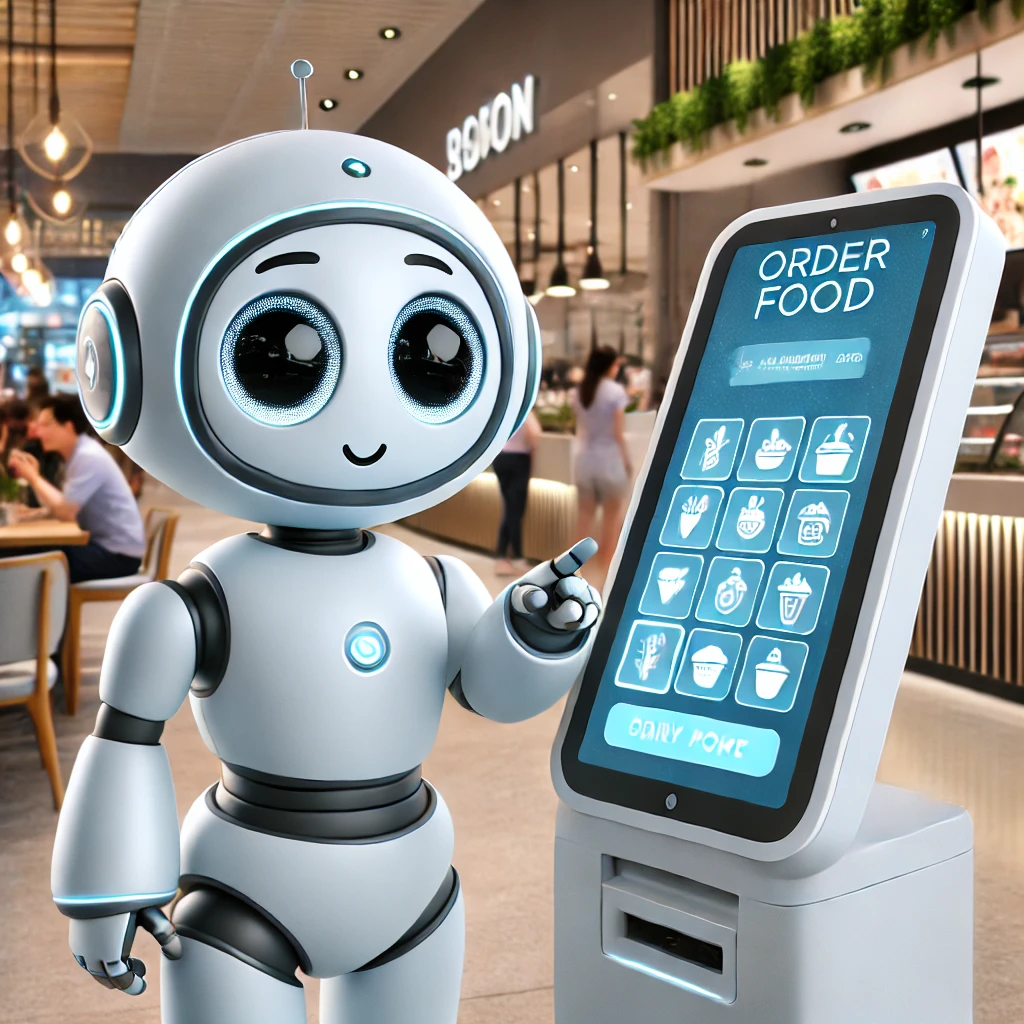
Why Are Businesses Turning to Kiosks? The Real Reasons
The primary driver is cost control, especially concerning labor. But beyond that, there are compelling reasons to consider automation:
- Increased Efficiency: Kiosks can process orders and transactions faster than humans, reducing wait times and improving customer flow.
- Improved Accuracy: Automated systems minimize human error, leading to fewer mistakes in orders and transactions.
- Upselling and Cross-Selling: Kiosks can be programmed to suggest relevant add-on items, increasing average transaction value.
- Valuable Data Collection: Kiosks can gather data on customer preferences, traffic patterns, and popular items, providing valuable insights for business decisions.
Self-Service Kiosks: Not Just for the Big Guys
While large corporations were early adopters, interactive kiosk technology has become more affordable and accessible, making it a viable option for smaller businesses as well. In fact, these are the businesses that can see some of the biggest benefits, as they are often the hardest hit by the rising minimum wage increases.
Real-World Example: How Kiosks Can Transform a Small Business
Consider a small, locally-owned diner. By implementing self-service ordering kiosks, they could:
- Reduce labor costs: Potentially needing only one front-of-house employee instead of two, especially during slower periods.
- Increase table turn: Faster ordering and payment mean tables open up more quickly.
- Boost revenue: Even a modest increase in table turns can significantly impact annual revenue.
- Improve order accuracy: Fewer errors lead to happier customers and less wasted food.
The Retail Revolution: How Kiosks Are Changing the Game
Retail is another sector ripe for kiosk disruption. Here's how they're making a difference:
- Empowering Customers: Interactive directories help shoppers find what they need quickly and independently.
- Streamlining Checkout: Self-checkout kiosks reduce wait times, especially during peak hours.
- Expanding Inventory: In-store kiosks allow customers to order items not available on the shelves, shipped directly to their homes.
- Boosting Sales: Kiosks never forget to upsell or cross-sell, increasing average transaction value.

Addressing the Downsides: Smart Planning is Key
Of course, no technology is without its potential drawbacks. Early kiosk deployments were sometimes plagued by high maintenance costs and technical glitches. However, advancements in software and remote management capabilities have largely addressed these issues.
The most common reason for kiosk program failure? Inadequate planning and a lack of clear goals.
Here's how to avoid common pitfalls:
- Choose the Right Software: This is crucial for reliability and ease of maintenance. Modern kiosk software is designed to be robust and remotely manageable.
- Set Clear Goals: Define what you want your kiosk program to achieve from the outset. This will guide your decisions throughout the process.
- Thorough Research: Understand your target audience, their needs, and their comfort level with technology.
- Invest in User-Friendly Design: Make sure the kiosk interface is intuitive and easy to navigate.
The Bottom Line: Automation is Here to Stay
The shift towards automation is not a fad; it's a fundamental change in how businesses operate. By embracing self-service kiosk technology, companies can adapt to the evolving economic landscape, improve efficiency, and enhance the customer experience.
REDYREF: Your Partner in Automation
At REDYREF, we're here to help businesses thrive in the age of automation. As a provider of vertically integrated kiosk solutions, we offer a range of customizable options designed to meet your specific needs, all backed by our commitment to quality, reliability, and exceptional customer support. We have the experience and expertise to guide you through every step of the process, from initial concepting to deployment and ongoing maintenance.
Ready to explore how self-service kiosks can help your business navigate rising labor costs and achieve new levels of success? Simply submit a request for a proposal online or call (800) 628-3603 today for more information.
A Step-by-Step Guide to Developing a Kiosk Plan That Works
Self-service kiosks are everywhere, and for good reason. They can streamline operations, improve customer experience, and boost your bottom line. But simply buying a digital kiosk and hoping for the best is a recipe for disappointment. A successful kiosk deployment requires a strategic, needs-based approach. You must define why you need one and what you want it to achieve before you start looking at hardware and software. This article will guide you through that crucial planning process, ensuring you make informed decisions that align with your business goals.

Step 1: Understand Your Target Audience
Before you even think about touchscreens or payment processors, think about your customers (or users, if the kiosk is for internal use, like employee time clocks or inventory management). Who are they? What are their needs and expectations? What are their tech-savviness levels?
- Demographics: Consider age, income, education, and other relevant demographic factors. A self-service kiosk designed for tech-savvy millennials might be overwhelming for senior citizens.
- Tech Literacy: How comfortable are your users with technology in general? A complex interface might be fine for some, but a major barrier for others.
- Needs and Pain Points: What problems are you trying to solve for your users? Are they looking for speed, convenience, information, or something else?
- Accessibility: Ensure your kiosk strategy is inclusive. Consider users with disabilities, including visual, auditory, motor, and cognitive impairments. ADA compliance is not just a legal requirement; it's good business.
Understanding your audience is the foundation of a successful kiosk strategy. The user experience should be tailored to their needs, not your assumptions.
Step 2: Define Your Core Business Goals
What do you want your self-service kiosk to achieve for your business? Be specific and measurable. Here are some common goals:
- Increase Speed of Service: Reduce wait times and improve throughput, particularly in high-volume environments like quick-service restaurants or event ticketing.
- Boost Sales and Average Transaction Value: Encourage upsells and cross-sells through targeted promotions and product recommendations.
- Gather Customer Data: Collect valuable information for marketing, product development, and customer relationship management (CRM).
- Reduce Labor Costs: Automate tasks that previously required staff intervention, freeing up employees for more complex or customer-facing roles.
- Improve Customer Satisfaction: Provide a more convenient, efficient, and personalized experience.
- Enhance Brand Image: Project a modern, tech-forward image and reinforce brand messaging.
- Improve Operational Efficiency: Streamline various internal operations.
Your specific goals will dictate many of your technology choices. For example, a digital kiosk focused on data collection might require sophisticated analytics software, while one primarily aimed at speed might prioritize a streamlined, minimalist interface.

Step 3: Assess Your Existing Systems and Infrastructure
Your kiosks won't operate in a vacuum. They need to integrate seamlessly with your existing technology ecosystem. Consider the following:
- Point of Sale (POS) System: Will the kiosk need to process payments? If so, it must be compatible with your POS system to ensure accurate transaction processing and inventory management.
- Customer Relationship Management (CRM) System: If you're collecting customer data, how will that data be integrated into your CRM?
- Network Infrastructure: Do you have sufficient network bandwidth and security to support the kiosks? Will they be wired or wireless?
- Inventory Management System: If the kiosk involves selling items, you need real-time inventory synching.
- Other backend systems: Consider the need for integration with loyalty programs, kitchen display systems (in QSRs), appointment scheduling software, and other relevant platforms.
Failing to consider system integration can lead to data silos, operational inefficiencies, and a frustrating user experience.
Step 4: Evaluate Your Physical Space
Where will the kiosks be located? The physical environment plays a significant role in self-service kiosk design and placement.
- Available Space: How much space do you have? Will the kiosks be freestanding, wall-mounted, or countertop?
- Traffic Flow: Where will customers naturally congregate? Place kiosks in high-traffic areas, but avoid creating bottlenecks.
- Accessibility: Ensure the kiosks are accessible to users with disabilities, complying with ADA guidelines.
- Lighting and Aesthetics: Consider the lighting and overall aesthetic of the space. The kiosk should be visually appealing and fit in with the surroundings.
- Power and Connectivity: Ensure adequate power outlets and reliable network connectivity are available at the chosen locations.
- Security: Kiosks, especially when placed outdoors or in less-supervised areas, need to be secured against theft and vandalism.

Step 5: Consider Staffing Implications
While self-service kiosks can automate many tasks, most don't eliminate the need for human interaction entirely.
- Training: Staff will need to be trained on how to use the kiosks, troubleshoot basic issues, and assist customers.
- Maintenance: Who will be responsible for routine maintenance, such as cleaning, restocking supplies (e.g., receipt paper), and addressing minor technical problems?
- Support: How will you handle more complex technical issues? Will you rely on in-house IT staff or an external service provider?
- Staffing Levels: While digital kiosks can reduce labor costs, you may still need staff nearby to assist customers, especially during peak hours or for complex transactions.
Putting It All Together: Developing Your Strategic Plan
Once you've thoroughly assessed your needs, goals, systems, space, and staffing, you can start developing a comprehensive kiosk strategy. This plan should include:
- Specific Kiosk Functionality: Based on your goals, what features and capabilities will the kiosks need?
- Hardware and Software Selection: Choose kiosks and software that meet your functional requirements and integrate with your existing systems.
- Deployment Timeline: Develop a realistic timeline for procurement, installation, testing, and launch.
- Budget: Determine the total cost of ownership, including hardware, software, installation, maintenance, and ongoing support.
- Metrics for Success: How will you measure the effectiveness of your kiosk deployment? Define key performance indicators (KPIs) aligned with your goals (e.g., transaction volume, average order size, customer satisfaction scores).
- Contingency Planning: What will you do if a kiosk goes down? Have a backup plan in place to minimize disruption.
Don't Just Buy a Kiosk, Build a Strategy
Deploying self-service kiosks can be a game-changer for your business, but only if it's done strategically. By taking a needs-based approach and carefully considering all the factors outlined above, you can ensure that your kiosk investment delivers real value and contributes to your long-term success. Don't just buy a box; build a strategy. Companies like REDYREF, with years of experience in the self-service industry, can provide valuable guidance and support throughout this process, helping you navigate the complexities of digital kiosk deployment and maximize your return on investment.
Kiosks can improve efficiency, reduce costs, and create a positive impression of your business for customers. But while kiosk hardware is essential, choosing the right kiosk software is just as important. The software determines functionality, security, and the overall user experience, and making the right choice is a critical step in the deployment of any self-service kiosk project.
So how do you find the best kiosk software for your needs? Whether you’re setting up kiosks for self-check-in, reverse ATM transactions, ticketing, vending, or wayfinding, this guide will help you choose the right solution for your specific project or environment.
1. Define Your Kiosk’s Purpose
Before selecting software, you need to determine what your kiosk will do. The best software solution depends on the use case and industry. Ask yourself:
✅ Will the kiosk process payments?
✅ Does it need to integrate with other systems, such as inventory management or scheduling tools?
✅ Should it support multiple languages or accessibility features?
✅ Will the kiosk be used indoors or outdoors?
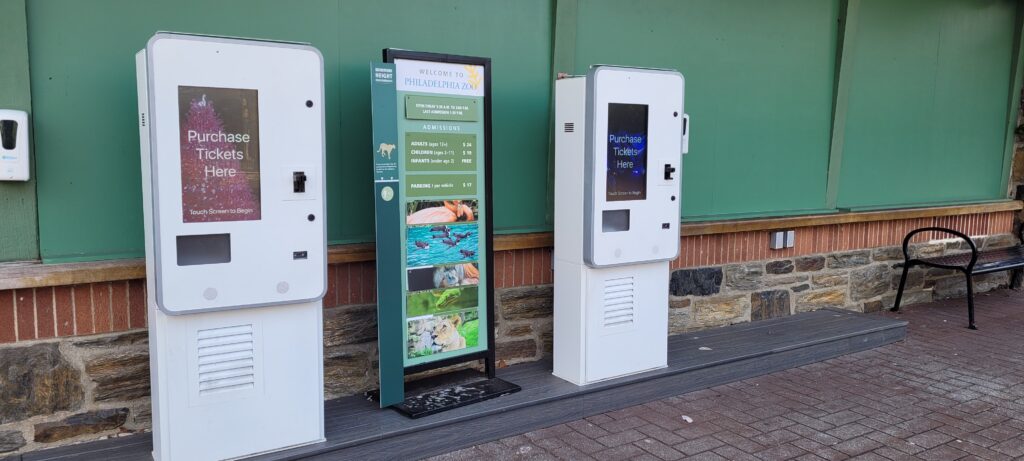
Common Kiosk Applications & Their Software Needs:
•Self-Check-In Kiosks (Hospitals, Hotels, Offices) → Needs appointment integration, ID verification, and a user-friendly interface.
•Retail & Vending Kiosks → Requires secure payment processing, inventory tracking, and real-time updates.
•Wayfinding & Information Kiosks → Should have interactive maps, search functions, and touch-friendly navigation.
•Ticketing Kiosks (Transportation, Events) → Must include ticket printing, barcode scanning, and digital payment options.
•Reverse ATMs / Cash to Card Kiosks → Need bill acceptors and debit card dispensing technology to enable cashless payments.
2. Look for Key Software Features
The right kiosk software should offer essential features that match your business needs while providing a smooth and secure user experience. Here are some must-have features:
User-Friendly Interface
The software should be intuitive, with clear navigation and responsive touchscreen functionality. A confusing interface can frustrate users and reduce engagement.
Remote Management Capabilities
Being able to monitor, update, and troubleshoot kiosks remotely is critical, especially for large deployments. Look for cloud-based solutions that offer real-time system monitoring and software updates.
Security & Compliance
Your kiosk software should protect sensitive user data and comply with industry regulations (e.g., PCI-DSS for payment security or HIPAA for healthcare). Features like data encryption, automatic logouts, and secure authentication are key.
Integration with Third-Party Systems
Kiosks often need to connect with other software platforms—whether it’s a hospital’s patient management system, a retail POS system, or an event ticketing platform. Ensure your software supports API integrations.
Customizability & Branding
Your kiosk should reflect your brand. The best software allows customization of colors, logos, and workflows to create a seamless brand experience.
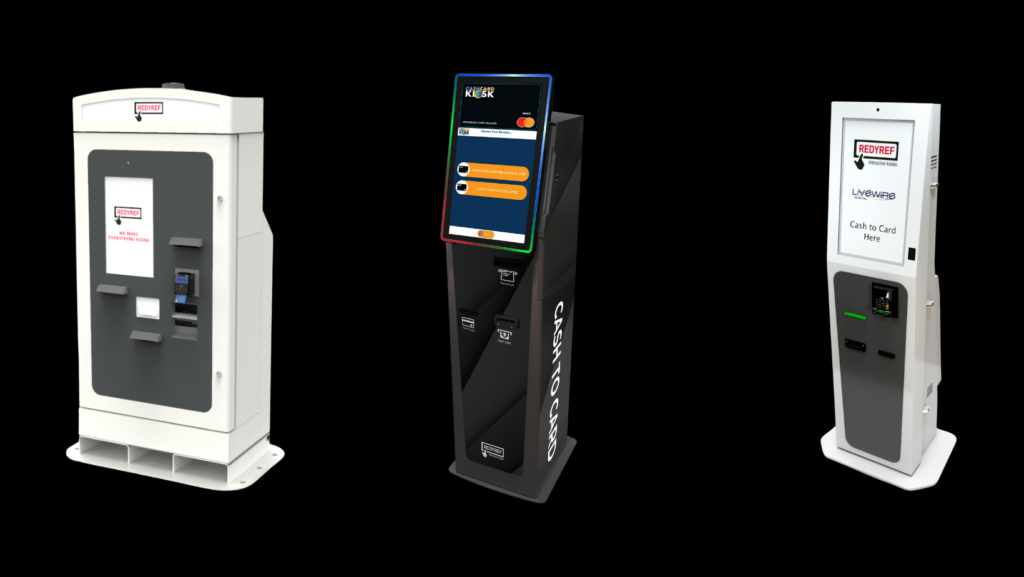
3. Consider the Deployment Environment
Where your kiosk will be placed plays a huge role in selecting software.
Indoor vs. Outdoor – Outdoor kiosks need software that supports weather-resistant hardware and screen brightness adjustments.
High-Traffic vs. Low-Traffic Areas – High-traffic locations require fast, responsive software to prevent bottlenecks.
Standalone vs. Networked Kiosks – If your kiosks need to communicate with one another or share data, cloud-based software with real-time updates is a must.
4. Prioritize Scalability & Future Growth
Think beyond your current needs. Can the software handle additional locations, features, or updates as your business grows? Look for solutions that:
✔ Support multiple kiosk types within the same platform.
✔ Allow easy upgrades without major overhauls.
✔ Offer flexible pricing models (one-time, subscription-based, or per-kiosk licensing).
5. Work with a Trusted Kiosk Software Provider
Choosing the right vendor is just as important as choosing the right software. A reliable provider should:
⭐ Have experience in your industry.
⭐ Offer responsive customer support.
⭐ Provide ongoing updates and security patches.
⭐ Deliver a trial or demo so you can test the software before committing.
At REDYREF, we specialize in custom kiosk solutions that combine cutting-edge software with durable, high-performance hardware. Our expert team helps businesses across industries find the right self-service kiosk software to match their unique needs.
Final Thoughts: Find the Best Kiosk Software for Your Business
The best kiosk software aligns with your goals, enhances user experience, and ensures seamless functionality. By defining your kiosk’s purpose, prioritizing key features, and considering scalability, you can make an informed choice that drives efficiency and engagement.
If you’re ready to find the perfect software for your self-service kiosks, contact REDYREF today to explore our industry-leading kiosk solutions!
Healthcare environments require efficiency, yet patient satisfaction is more important than ever. You're constantly seeking ways to improve workflows, reduce wait times, and enhance the overall patient experience. That's where medical office check-in kiosks are making a real difference. If you're a hospital administrator or practice manager considering self-check-in technology, this post is for you. Let's explore how these innovative solutions can transform your practice.

What are Medical Check-In Kiosks and Why Are They Popular?
Medical check-in kiosks are essentially self-service stations that allow patients to check in for appointments, update their information, and even make payments without needing to interact directly with front desk staff. Think of them as user-friendly ATMs for healthcare. These healthcare kiosks are rapidly gaining popularity because they offer a win-win situation: patients enjoy a faster, more convenient experience, while practices benefit from increased efficiency and reduced administrative burden.
The Benefits of Implementing a Patient Check-In System
Investing in a patient self-check-in system can bring numerous advantages to your practice:
- Reduced Wait Times: This is perhaps the most significant benefit. Kiosks dramatically speed up the check-in process, minimizing those frustrating bottlenecks at the front desk. Shorter wait times lead to happier patients and a more positive perception of your practice.
- Improved Patient Flow: By automating check-in and queuing, hospital kiosks and medical kiosks create a smoother, more organized flow of patients through your facility. This can lead to a more relaxed and efficient atmosphere.
- Increased Efficiency: Self-check-in kiosks free up your front desk staff to focus on more complex tasks, such as handling phone calls, scheduling appointments, and addressing patient concerns. This leads to a more productive use of staff time and resources.
- Enhanced Accuracy: Kiosks reduce the risk of human error when entering patient data. Patients can verify and update their information directly, ensuring accuracy and reducing potential issues down the line. These medical kiosks help create a more streamlined experience.
- Cost Savings: While there's an initial investment, healthcare kiosks can lead to long-term cost savings by optimizing staff utilization and reducing administrative overhead.
- Improved Patient Satisfaction: Patients appreciate the convenience and control that patient kiosks offer. The ability to check in quickly and independently contributes to a more positive overall experience.
- Data Collection and Reporting: Many health care kiosks offer valuable data collection capabilities. You can track patient flow, identify peak times, and gain insights into patient demographics, helping you make informed decisions about staffing and resource allocation.

Choosing the Right Medical Check-In System for Your Practice
When selecting a medical check-in system, consider the following factors:
- Features and Functionality: What specific features do you need? Common features include appointment check-in, insurance verification, co-pay collection, demographic updates, and consent form signing.
- Ease of Use: The system should be intuitive and easy to use for both patients and staff.
- Customization: The ability to customize the kiosk's appearance and workflow to match your practice's branding and needs.
- Security: Robust security measures are non-negotiable.
- Support and Maintenance: Choose a vendor that offers reliable technical support and ongoing maintenance.
- Cost: Compare pricing and consider the long-term return on investment.
REDYREF: Your Partner in Medical Check-In Solutions
At REDYREF, we understand the unique challenges faced by healthcare providers. We're a leading healthcare kiosk manufacturer offering state-of-the-art medical check-in systems designed to streamline your practice and enhance the patient experience. Our kiosks are:
- User-Friendly: Featuring intuitive touchscreens and clear instructions.
- Secure: Security features protect patient data.
- Customizable: Tailored to your practice's specific needs, from functionality to branding.
- Integratabtle: Seamlessly integrate with payment systems
- Reliable: Backed by our expert support team.
The Bottom Line: Invest in Your Practice's Future
Implementing a patient self-check-in system is a smart investment that can transform your practice. By embracing this technology, you can improve efficiency, reduce costs, and enhance patient satisfaction. Ready to learn more about how REDYREF's healthcare kiosks can benefit your practice? Contact us today for a consultation and let's discuss your specific needs. We have experience helping practices of all sizes make the transition to self-check-in technology, and we're confident that we can help you achieve your goals.
The retail landscape is more competitive than ever. Customers are demanding faster service, personalized experiences, and seamless interactions. As a business owner or retailer, you're likely constantly looking for ways to meet these demands, improve efficiency, and ultimately, boost your bottom line. That's where automated retail kiosks come in. They're not just a trend; they're a strategic investment that can transform your business.

Why Automated Kiosks Are the Future of Retail
Think of automated retail kiosks as your hardest-working employees, available 24/7, and always ready to serve. They offer a powerful combination of benefits that directly address the challenges retailers face today:
-
Increased Revenue:
- Faster throughput: Kiosks process transactions quickly, reducing wait times and allowing you to serve more customers, especially during peak hours.
- Upselling and cross-selling: Interactive kiosks can be programmed to suggest complementary products or offer promotions, increasing average transaction value.
- Extended hours: Certain self-service kiosk systems setups can operate outside of regular store hours, capturing additional sales opportunities.
-
Reduced Operational Costs:
- Optimized staffing: Digital kiosks can handle routine tasks like checkout, freeing up your staff to focus on more complex customer interactions and sales activities.
- Lower labor costs: While kiosks require an initial investment, they can significantly reduce long-term labor costs, especially in high-turnover positions.
- Reduced shrinkage: Some kiosk setups can contribute to better inventory control and loss prevention.
-
Enhanced Customer Experience:
- Convenience and speed: Customers appreciate the self-service option, especially for quick purchases.
- Personalized interactions: Kiosks can offer product recommendations, loyalty program integration, and tailored promotions.
- Increased satisfaction: Shorter wait times and a more efficient shopping experience lead to happier customers.
-
Valuable Data and Insights:
- Track customer behavior: Kiosks collect data on purchasing patterns, product preferences, and traffic flow.
- Optimize product placement and promotions: Use data to make informed decisions about inventory, pricing, and marketing strategies.
- Measure ROI: Track kiosk performance and identify areas for improvement to maximize your investment.
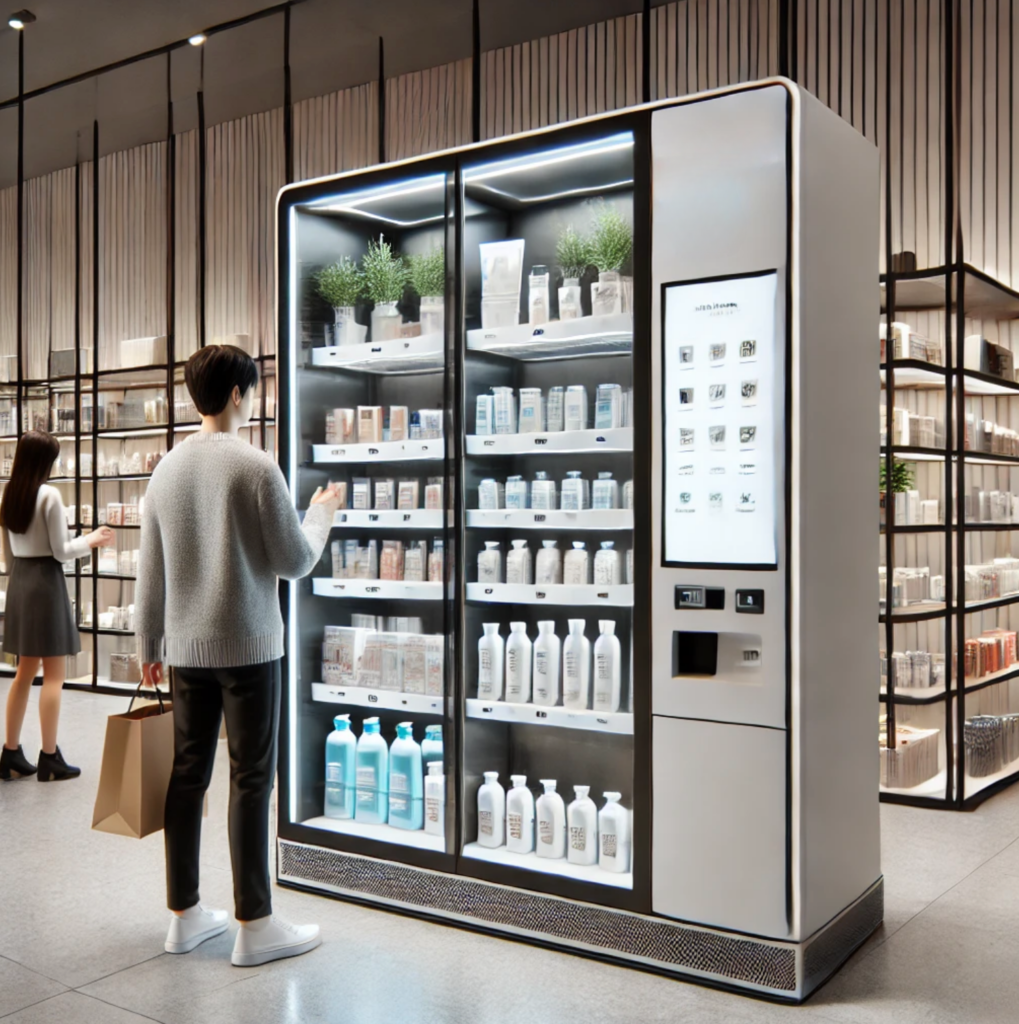
Real-World Success Stories: Kiosks in Action
Major retailers have already embraced kiosks and are reaping the rewards of automated retail:
- McDonald's: Self-ordering kiosks have streamlined their ordering process, reduced wait times, increased order accuracy, and boosted average order values.
- Sephora: Their automated vending machine kiosks provide a unique and engaging customer experience, leading to increased product exploration and sales.
- Airports: Self-service check-in kiosks have become an industry standard, dramatically improving efficiency and passenger flow.
- Home Depot/Lowe's: In-store product information kiosks empower customers with knowledge, leading to more confident purchase decisions.
Choosing the Right Kiosk Solution for Your Business
Selecting the right retail kiosk system depends on your specific needs, industry, and budget. Here are some key factors to consider:
-
Type of Kiosk:
- Self-checkout: Ideal for grocery stores, convenience stores, and other high-volume retail environments.
- Interactive: Perfect for engaging customers with product information, virtual try-ons, and personalized recommendations.
- Wayfinding: Essential for large retail spaces, malls, and department stores.
- Vending: Offers a 24/7 sales channel for a wide range of products, from personal care to small electronics.
- Custom: Tailored solutions designed to meet your unique requirements.
-
Software and Integration:
- Seamless integration: Ensure the kiosk software integrates with your existing POS, inventory management, CRM, and other systems.
- User-friendly interface: Choose a system that is intuitive and easy for both customers and staff to use.
- Data analytics: Select a solution that provides robust data tracking and reporting capabilities.
-
Hardware and Design:
- Durability and reliability: Choose robust hardware built to withstand heavy usage in a retail environment.
- Aesthetics and branding: Select a design that complements your store's aesthetic and reinforces your brand identity.
- Security: Ensure the kiosk has strong security features to protect customer data and prevent fraud.

Partnering with the Right Kiosk Vendor: Key Considerations
Choosing a reputable and experienced retail kiosk vendor to manufacture your system is crucial for a successful implementation. Look for a partner who offers:
- Proven expertise: A vendor with a strong track record in designing, manufacturing, and deploying retail kiosks. They should have a deep understanding of retail workflows.
- Customization capabilities: The ability to tailor hardware and software to your specific needs and branding requirements.
- Comprehensive support: Ongoing maintenance, technical support, and software updates to ensure optimal performance.
- Scalability: A solution that can grow and adapt as your business evolves.
The Bottom Line: Retail Kiosks Are an Investment in Future Growth
Investing in retail kiosks is not just about keeping up with the latest technology; it's about strategically positioning your business for future growth and success. By carefully considering your needs and partnering with the right vendor, like REDYREF, you can leverage the power of automated retail to enhance customer experience, streamline operations, and drive profitability. The right kiosk system can be a powerful tool to help you thrive in today's competitive retail landscape.

 Several converging factors have accelerated the demand for self-service solutions across industries.
Several converging factors have accelerated the demand for self-service solutions across industries. Organizations implementing self-service solutions report significant advantages beyond improved customer satisfaction.
Organizations implementing self-service solutions report significant advantages beyond improved customer satisfaction. Artificial Intelligence Integration: AI-powered kiosks can provide more personalized recommendations, understand natural language queries, and learn from customer interactions to improve over time. This makes self-service options more helpful and engaging.
Artificial Intelligence Integration: AI-powered kiosks can provide more personalized recommendations, understand natural language queries, and learn from customer interactions to improve over time. This makes self-service options more helpful and engaging.

















